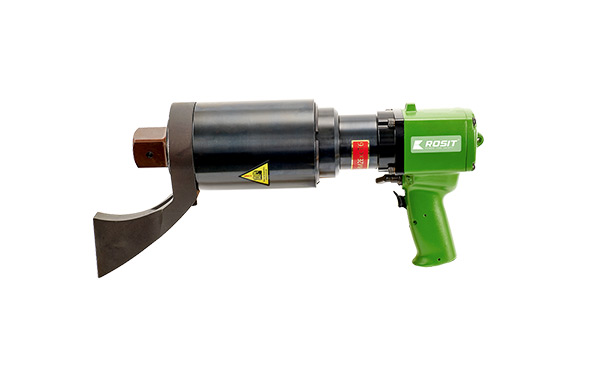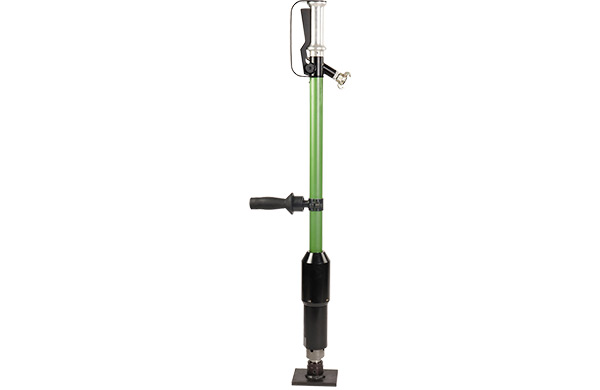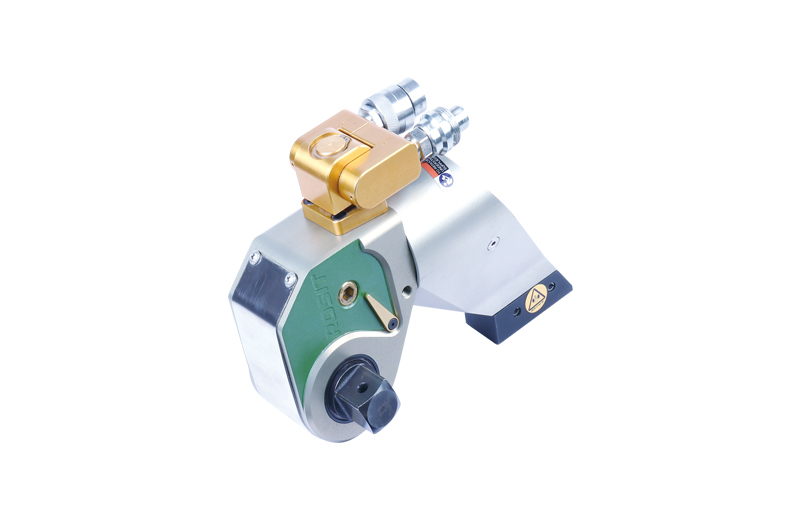- Power Tools
-

Saws
Chain Saw Concrete Chain Saw Band Saw Reciprocating Saw ...
-

Cutters
Pneumatic Cutter Pipe Cutting Machine Nut Cutter
-

Drills
Hammer Drill Pistol Hammer Drill Two Hand Operation Drill Column Drill ...
-

Impact Wrenches
Pneumatic Impact Wrench (Ex-proof Series) Pneumatic Impact Wrench (Ultra light Series) Emulsion Impact Wrench Nut Runner ...
-

Torque Wrenches
Pneumatic Torque Wrench Electric Torque Wrench Hydraulic Torque Wrench Hollow Hydraulic Wrench ...
-

Mining Waterjet Cutting Machine
Electric Mining Waterjet Cutting Machine Pneumatic Mining Waterjet Cutting Machine Emulsion Mining Waterjet Cutting Machine
-

Hammers
Pneumatic Chipping Hammer Hydraulic Chipping Hammer
-

Scaler
Pneumatic Long Reach Scaler
-

Rammer
Pneumatic Rammer
-

Grinders
Wet Grinder Angel Grinder Electric Grinder
-

Fan
Pneumatic Fan Heavy Fixed Fan
-

Hoist
Chain Hoist Electric Hoist Pneumatic Hoist Hydraulic Hoist ...
-

Winch
Pneumatic Winch
-

Pump
Pneumatic Submersible Pump Emulsion Submersible Pump
-

Assembly
Torque Multipler C-Hog Ring Plier
-
- Accessories
-

Cutting
Chainsaw Concrete Chainsaw Band Saw Reciprocating Saw ...
-

Drilling
Impact Drills Light Drills Magnetic Drills丨Rail Drills Balance Drills丨Angle Drills ...
-

Assembly
Impact Wrenches C-Hog Ring Plier
-

Hammer & Shovel
Chipping Hammer Derusting Shovel
-

Grinding
Grinders
-

Hydraulic Accessories
Nut Runner Cutter
-

General Accessories
Waterjet Cutting Machine Filter assy. Filter assy. Water Pump ...
-
- Company Profile
- Service
- News
-

Events
The 21st 2023 Taiyuan Coal (En The 17th Yulin International C The 20th TaiYuan (2021) Coal ( The 16th Ordors International Have a machine repaired or hav ...
-

Case Study
Specifications of adjustable w Have a machine repaired or hav
-

Industry News
Using Chainsaws to Cut Snow? What to do if the pneumatic wr Hydraulic chain saw Operation of the wrench Introduction to the principle ...
-
- Download
- Contact
How to identify the quality of hydraulic oil for hydraulic wrenches.https://www.biimpact wrench sale
source:Industry News release time:2021-12-08 Article author:Rosit Popular:Air band saw

The quality of hydraulic oil not only influences the normal operation of Engineering machinery, but also causes serious damage to hydraulic system components. Now combined with work practice, several methods for simply identifying the quality of hydraulic oil without special inspection (inspection and testing) equipment are summarized.
1 Identification of hydraulic oil moisture content
(1) Visual inspection method: If the oil is milky white and turbid, it means that the oil contains a lot of water.
(2) Combustion method: Dip a small amount of oil to be tested (inspected and tested) with clean, dry cotton yarn or tissue paper, and then ignite it with fire. If you find a "crack" popping sound or flashing phenomenon, it means that the oil contains more water.
2 Identification of impurity content in hydraulic oil
(1) Sensory identification: There are obvious suspended metal particles in the oil, and the presence of fine particles can be directly felt when kneading with your fingers; if there is a reflective flash point under light, it means that the hydraulic components have been severely worn; if A large amount of metal chips deposited on the bottom of the fuel tank indicates that the main oil pump or electric motor and engine have been severely worn.
(2) Heating identification: For hydraulic oil with lower viscosity, it can be directly put into a clean and dry test tube to heat up. If precipitation or suspended matter is found in the oil in the test tube, it means that the oil contains mechanical impurities.
(3) Filter paper identification: For hydraulic oil with higher viscosity, it can be diluted with pure gasoline and then filtered with clean filter paper. If a large amount of mechanical impurities (metal powder) are found on the filter paper, it means that the hydraulic components have been severely worn.
(4) Sound identification: If the entire hydraulic system has large and intermittent noise and vibration, and the main oil pump makes a "buzzing" sound, or even the phenomenon of "crawling" of the piston rod, observe the oil tank liquid level at this time. A large amount of foam will be found at the outlet of the tubing or the transparent level gauge. This condition (Condition) shows that the hydraulic oil has been immersed in a large amount of air.
3 Identification of hydraulic oil viscosity changes
(1) Glass plate tilting method: Take a clean glass plate, place it horizontally, and place a drop of the tested hydraulic oil on the glass, and at the same time drop another drop of standard hydraulic oil (new hydraulic oil of the same brand) next to it. Then tilt the glass plate and observe carefully: if the flow rate and flow distance of the tested oil are larger than the standard oil, it means that its viscosity is lower than that of the standard oil; otherwise, it means that its viscosity is higher than that of the standard oil.
(2) Glass bottle inversion method: Put the tested hydraulic oil and standard oil in two transparent glass bottles of the same size and length (do not fill them too full), and then use the stopper to put the two bottles The mouth is blocked. Place the two bottles side by side, and then quickly turn them upside down at the same time. If the bubbles of the tested hydraulic oil in the bottle rise faster than the bubbles of the standard oil in the bottle, it means that the viscosity of the oil is lower than that of the standard oil, otherwise, it means that the viscosity of the oil is higher than that of the standard oil; If the rising speeds of the bubbles of the two oils are similar, the viscosity is also similar.
4 Identification of hydraulic oil quality changes
(1) Identification of oil pump oil: Take out a small amount of tested oil from the oil pump. If it is found to be milky white and turbid (sometimes like light yellow milk), and when it is identified by the combustion method, it is found to contain a lot of water. The feel of the hand has lost its stickiness, indicating that the oil has been thoroughly emulsified and deteriorated and should not be used again.
(2) Identification of the oil in the fuel tank: Take out a small amount of the tested oil from the fuel tank and filter it with filter paper. If there is a black residue on the filter paper and there is a pungent odor, it means that the oil has been oxidized If it deteriorates, you can also take out part of the precipitation sludge directly from the bottom of the fuel tank. If you find a lot of asphalt and gum deposits in it, put it on your fingers and pinch it (niǎn). If you feel that there is more gum, it has strong adhesion. , It means that the oil has been oxidized and deteriorated. Abstract: Introduced the troubleshooting process of a hydraulic oil staining fault, and formulated measures to prevent the recurrence of this fault. During the lowering of the H3/36B construction tower crane, the third During the operation of the stroke, the hydraulic cylinder suddenly failed to lift, and the piston rod had only a very slight extension action.
Read recommendations:
AW22-2000 Pneumatic Impact Wrench (Ultra-Light Series)
AW22-750 Pneumatic Impact Wrench (Ultra-Light Series)
related articles
Using Chainsaws to Cut Snow?
2024-05-21What to do if the pneumatic wrench is weak
2022-12-19Hydraulic chain saw
2022-12-13Operation of the wrench
2022-12-06Introduction to the principle of pneumatic wrench
2022-11-28How to use the pneumatic wrench
2022-11-21Brief introduction to the principle of pneumatic wrench
2022-11-14Impact pneumatic wrench
2022-11-07Correct hydraulic wrench operation procedure
2022-11-01Hydraulic wrench torque pressure conversion
2022-11-01Field operation procedure of hydraulic wrench
2022-10-24Hydraulic radial plunger motor
2022-10-17The history of hydraulic motors
2022-10-17Principle of balance hydraulic wrench
2022-10-10The Price Factor of Smart Electric Torque Wrench
2022-10-10Introduction to the advantages of using intelligent electric torque wrench
2022-10-10The Price Factor of Smart Electric Torque Wrench
2022-10-10Classification and use of wrenches
2022-10-10hydraulic wrench pressure conversion
2022-10-10Introduction to the advantages of the use of intelligent electric torque wrench
2022-10-10Smart Electric Torque Wrench Selection Guide
2022-10-10Intelligent electric torque wrench for wind power generation
2022-10-09Uses of open-end wrenches.Pneumatic chainsaw
2022-10-08What are the driving parts of a hydraulic wrench and what they do
2022-09-30What are the driving parts of a hydraulic wrench and what they do
2022-09-23the commonly used wrenches
2022-09-22Introduction of several common wrenches
2022-09-21Application scope and daily maintenance method of hydraulic bolt tensioner
2022-09-20Characteristics of hollow hydraulic wrench and precautions for use
2022-09-19Characteristics and precautions of driving hydraulic wrench
2022-09-17Power Tools
DC31-400 Hydraulic Core Drill
2023-06-20OF27-360 Heavy Fixed Fan
2023-06-28CN21-1424 Nut Cutter丨Manual Integrated Nut Cutter
2022-12-12LH61-002 Emulsion Hoist
2023-06-29CD31-380 Hydraulic Concrete Chainsaw
2023-06-16LH61-032 Emulsion Hoist
2023-06-29AN71-5500 Torque Multiplier
2023-06-29AN22-4500 Pneumatic Torque Wrench (straight shaft)
2023-06-27AK51-110 Pneumatic C-Hog Ring Plier (Charging/Manual 1.5 coil)
2023-06-29GP21-060 Pneumatic Submersible Pump
2022-12-29AN71-15000 Torque Multiplier
2023-06-29CS31-180 Hydraulic Handheld Circular Saw
2021-06-15LH22-001 Pneumatic Hoist
2021-05-17GP21-004 Pneumatic Submersible Pump
2022-12-29OF11-060 Pneumatic Fan (light/medium)
2022-12-29DP21-080 Pneumatic Two Hand Operation Drill
2021-06-15AN31-4500 Hydraulic Torque Wrench
2023-06-27AN11-10000 Electric servo CNC Torque Wrench
2023-06-27AW22-8000 Pneumatic Impact Wrench (Ultra-Light Series)
2021-06-15CB22-200 Pneumatic Band Saw - Stainless Steel Series
2023-06-16CD22-380 Pneumatic Concrete Chainsaw (5.0KW)
2023-06-16AN71-10000 Torque Multiplier
2023-06-29RC21-850 Pneumatic Long Reach Scalers
2023-06-27OW64-020 Integrated Emulsion Mining Waterjet Cutting Machine
2023-05-10AW21-4000 Pneumatic Impact Wrench (Ex-proof Series)
2022-12-19AK71-130 Manual C-Hog Ring Plier (1.5 coil)
2022-12-12GP61-400 Emulsion Submersible Pump
2023-06-29DA21-075 Pneumatic Angle Drill
2023-06-19LW21-010 Pneumatic Winch
2023-01-06AN51-2000 Electric servo CNC Torque Wrench
2023-06-27Accessories
Alloy Twist Drill Bits
2023-06-06Cutting Blades
2023-06-07Carborundum saw Blades
2023-06-06Tool Bits
2023-06-07Alloy Saw Blades丨CR814 Series
2023-06-06Tool Bits
2023-06-07Alloy Sleeves
2023-06-07Carbide Hollow Bits丨DM816 Series
2023-06-06Hard Alloy Hollow Drill Bits assy.丨DB84 Series
2023-06-07Pipe Fixed Clamps丨CB861-18
2023-06-06Cross Clamps丨CB862-22
2023-06-06Alloy Saw Chains丨CC812/CC816 Series
2023-06-06Integrated Hollow Drill Bits丨DC81
2023-06-07Alloy Saw Blades丨CR816 Series
2023-06-06Alloy Saw Blades丨CR811 Series
2023-06-06Filter assy.
2023-06-07Alloy Guide Bars丨CC814 Series
2023-06-06Hydraulic Pump Station
2023-06-07Abrasive Blades
2023-06-07Chisels
2023-06-07Carbide Hollow Bits丨DM818 Series
2023-06-06Carbide Inserts Twist Bits丨DB82 Series
2023-06-06Sleeve KIT
2023-06-07Pin
2023-06-07Oiler
2020-06-13Alloy Drill Bits丨811 Series
2023-06-06Diamond Saw Blades
2023-06-06Alloy Saw Blades丨CR811-150/152
2023-06-06Alloy Sleeves (Square to Outer Hexagonal)
2023-06-07Filter assy.
2023-06-07

















 You are here: >
You are here: >



